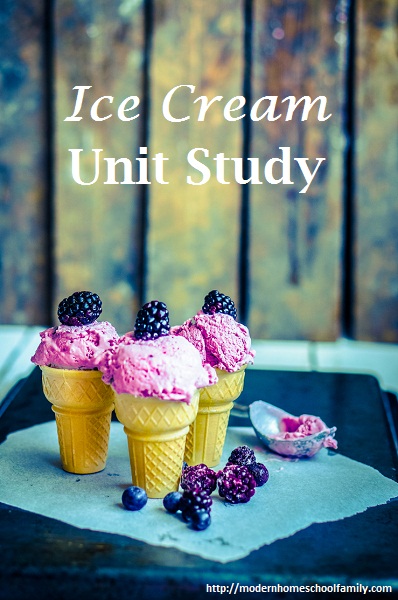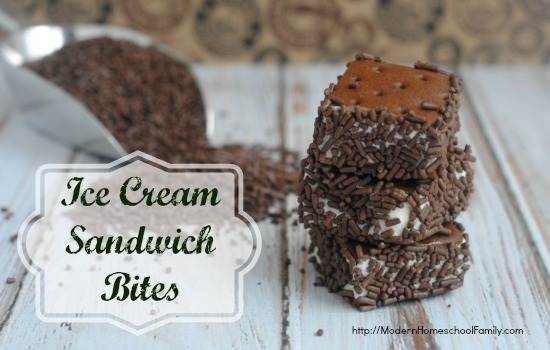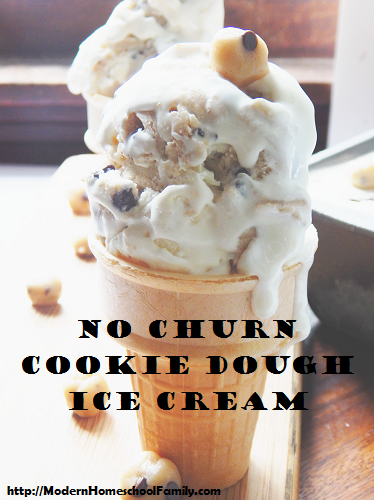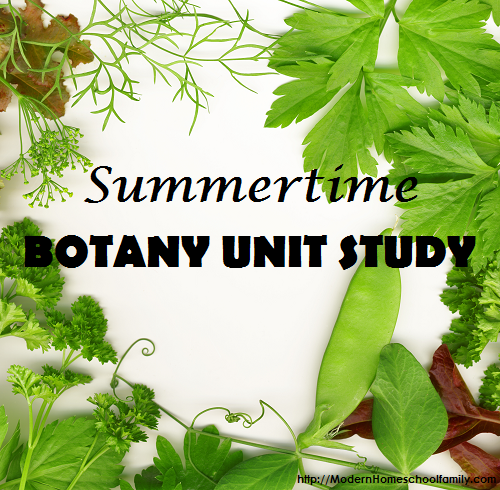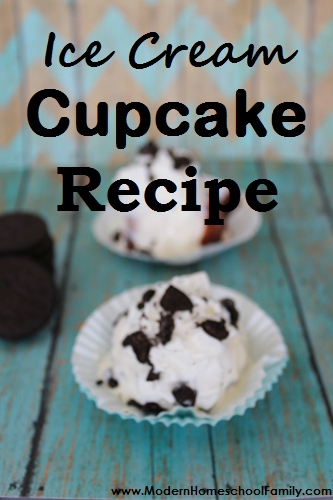Chocolate chip, rocky road, cookies and cream . . . does the thought of ice cream make your mouth water? If the weather is warm, a trip to the ice cream parlor might inspire homeschoolers to abandon their work for a bit to enjoy a tasty treat. What if you learned some easy techniques to make your own ice cream or granita, the Italian version of slush? Wouldn’t it be great if you could get the kids inspired to learn about ice cream in all the curriculum areas? Get out the scoop and prepare to dish out an indulgent unit study about ice cream.
Kids welcome a thorough study of ice cream at any time of the year, though especially so when the weather is hot or when the winter doldrums have people feeling out of sorts. Another great time to do this unit is when you’re traveling. For example, if you’re visiting New York City, you have a myriad of options to explore in this unit. Go to a Thai restaurant to try coconut or mango ice cream or to Chinatown, where you’ll find black sesame or durian popsicles in the freezer case. For the ultimate in taste explorations, take the family to Il Laboratorio del Gelato in lower Manhattan, where you’ll find more than two hundred flavors of gelato (Italian ice cream) or sorbet. If you plan ahead, you might even be able to organize a field trip to an artisanal ice cream maker, where you can watch the product being made and ask questions about the process.
With students of all ages, try starting the unit with a brainstorming session: “Jot down everything you know about or have ever heard about ice cream . . . flavors, colors, textures, where you buy it, ingredients used in ice cream, and so on.” Even preschoolers can draw their ideas—cones, sprinkles, a grocery cart full of ice cream or popsicles—whatever comes to mind.
Curriculum Areas
Science
- Discuss how salt was essential to the earliest making of ice cream. Discuss salt’s effects on the cooling temperature of ice. Jules Older’s book Ice Cream: Including Great Moments in Ice Cream History has great illustrations and a simple explanation of this phenomenon.
- Ice cream is sold by volume, rather than weight. Discuss the concepts of volume versus weight and have students research different ice cream/sorbet/sherbet containers, comparing their volumes with their weights (as measured on a kitchen scale). Premium, more expensive, ice creams tend to weigh more because they contain more butterfat and milk solids than cheaper brands of ice cream. Older students could call the customer service lines of various ice cream companies to find out more about the amounts of butterfat in ice cream products or ask questions about unfamiliar ingredients such as soy lecithin, xanthan gum, and so on. For example, what purpose does locust bean gum serve in the ice cream?
History
- Using the books and websites in the Resources section, have students create timelines for the major events in ice cream history. Younger students might be responsible for researching a forty-year time period or for covering ten major events in ice cream history.
- Research the earliest days of ice cream in the United States. Older students might create journal entries about the people or inventions they believe to have been the most influential in ice cream history. Some lesser known figures include Nancy B. Johnson and Augustus Jackson.
- They might also research the debate about whether or not Marco Polo brought “water ices” back from China.
Geography
- Use a blank map of the United States to have students show which cities are the largest consumers of ice cream. They can also display the largest ice cream-producing states on the same map.
- Use a world map to show which countries are the biggest ice cream-eating nations (by liters or gallons per person each year).
- Discuss which regions or continents seem to have little ice cream consumption and what factors might lead to low consumption (culture, access to refrigeration, expense of the product, etc.).
- Talk to people from other countries about their own experiences with ice cream, shave ice, popsicles, and other frozen treats. See if you can get some international recipes to try making at home.
Math
- Have students graph the ten biggest ice cream-producing states in the U.S., American production of regular (not lowfat or nonfat) ice cream from 1920 to 2009, or 2009 U.S. Production of Frozen Desserts.
- Have students research and then graph which countries in the world are the biggest ice cream consumers (per person per year). Younger students might create a pie graph of the five most popular ice cream flavors in the United States.
- Read Stuart Murphy’s The Sundae Scoop with lower elementary-aged students. Have older students create more complicated versions of this problem, whereby they try to determine all the possible sundae combinations with 3–4 flavors of ice cream, hot toppings, and whipped cream/sprinkles/nuts.
Language Arts
- Read and discuss the process of making ice cream in the past, as depicted in excerpts from Farmer Boy (pp. 67–74 on getting and storing the ice, pp. 205–206 on making the ice cream).
- Older students can compare and contrast the techniques and tools/machines used to make ice cream from its earliest days until the present.
Health
- Have students investigate the nutritional differences of ice cream, gelato, sorbet or sherbet, and even tofu or nondairy-based “ice creams.” For each ½-cup serving, have students compare the total calories per serving, calories from fat, amount of sugar, and so forth.
- Older students can take notes on the grams of fat, carbohydrate, and protein in each of the frozen products, making comparisons between them. They can also use math to determine the percentage of calories from fat in a ½-cup serving.
Home Economics
- Experiment with recipes for homemade ice cream, granita, or popsicles. From fudgy to fruity, there’s a flavor for every student around in Alex Barker’s 500 Ice Creams, Sorbets & Gelatos: The Only Ice Cream Compendium You’ll Ever Need.
- For some real hands-on learning, try making ice cream in a coffee can or a bag. Dozens of recipes for these activities are available online. The ingredients are simple, and students get some exercise while making their frozen treat!
Spelling and Vocabulary
- For the lower elementary-aged kids, spelling and vocabulary words can include cream, sugar, salt, crank, and freeze.
- Upper elementary words include vanilla, butterfat, volume, flavoring, production, and consumption. Older students also could be challenged to learn to spell and define foreign words for ice cream, including gelato, dondurma, granita, and sorbet.
Art
- Students of all ages can create drawings, paintings, or dioramas of their ideal ice cream shop or the packaging they’d create if they were the head of a new ice cream company.
- Create a comic strip of the ice cream-making process, from cow to container.
Activities/Field Trips
- Depending on where you live, there may well be an ice cream factory tour available nearby. Most tours include an explanation of the ice cream-making process and . . . samples!
- If an in-person tour is not an option, students will love the excellent, thorough, animated tour available on Turkey Hill’s website: www.turkeyhillexperience.com/play-and-learn/virtual-tour.asp.
Tasty Facts
- In Australia, colored sprinkles are called “hundreds-and-thousands.”
- More ice cream is sold on Sunday than on any other day of the week.
- Chocolate syrup is the most popular ice cream topping in the United States.
- In 1984, President Ronald Reagan declared July National Ice Cream Month.
- President Barack Obama’s first job was scooping ice cream at a Baskin-Robbins shop in Honolulu, Hawaii.
Books and Resources
Nonfiction
- How It Happens at the Ice Cream Factory by Shawndra Shofner (Oliver Press, 2009)
- Ice Cream: Including Great Moments in Ice Cream History by Jules Older (Charlesbridge, 2002)
- Ice Cream: The Full Scoop by Gail Gibbons (Holiday House, 2006)
- Paletas: Authentic Recipes for Mexican Ice Pops, Shaved Ice & Aguas Frescas by Fany Gerson (Ten Speed Press, 2011)
- We All Scream for Ice Cream!: The Scoop on America’s Favorite Dessert by Lee Wardlaw (HarperTrophy, 2000)
- 500 Ice Creams, Sorbets & Gelatos: The Only Ice Cream Compendium You’ll Ever Need by Alex Barker (Sellers Publishing, 2009)
Picture Storybooks for Young Students
- Curious George Goes to an Ice Cream Shop by H. A. Rey (Houghton Mifflin, 2004)
- Ice Cream Cones for Sale! by Elaine Greenstein (Scholastic, 2004)
- The Ice Cream King by Steve Metzger (Tiger Tales, 2011)
- Should I Share My Ice Cream? by Mo Willems (Hyperion Book, 2011)
- The Sundae Scoop by Stuart J. Murphy (HarperCollins, 2002)
Read-Alouds or Readings for Older Students
- The Ice Cream Mystery (Boxcar Children series) by Gertrude Chandler Warner (Perfection Learning, 2003)
- Nancy Drew and the Clue Crew: Scream for Ice Cream by Carolyn Keene (Aladdin, 2006)
- Rocky Road by Rose Kent (Alfred A. Knopf, 2010)
Websites
Terrific sources about the history of ice cream, how to make your own, virtual tours and fun facts about ice cream:
www.foodtimeline.org/foodicecream.html
www.frommers.com/slideshow/index.cfm?group=586&p=1 (Accessed June, 2012)
www.idfa.org/news–views/media-kits/ice-cream/the-history-of-ice-cream
www.whatscookingamerica.net/History/IceCream/IceCreamHistory.htm
Around the World in a Scoop
While American ice cream eaters enjoy vanilla, chocolate, and strawberry, folks around the globe have their own preferences for frozen delights. People in the Philippines enjoy purple yam ice cream, while kids in Brazil might prefer a scoop of avocado ice cream or cashew ice cream. And fish-flavored ice creams are the rage in Japan—try a scoop of crab or eel—if you dare!
Flavored shave ice (like a snow cone or slush) is popular from Hawaii to Asia, but the toppings vary widely. In Malaysia, people like to top their shave ice with peanuts, corn, or even red beans.
Ice Cream Facts to Graph
- Data for 2009 Production of Frozen Desserts (in millions of gallons):
Regular ice cream: 920
Lowfat and nonfat ice cream: 398
Frozen yogurt: 74
Water ice*: 60
Sherbet: 53
Other: 15
Total: 1,520
*Water ice includes sorbet, frozen juice bars, and gelatin pops.
Source: USDA National Agricultural Statistics Service
- Data for Ten Leading States in 2009 Production of Ice Cream and Related Products (Hard and Soft, in millions of gallons):
California: 169
Indiana: 110
Texas: 72
Pennsylvania: 51
Ohio: 44
Massachusetts: 42
New York: 42
Missouri: 40
Illinois: 36
Utah: 36
Source: USDA National Agricultural Statistics Service
- U.S. Production of Regular Ice Cream from 1920–2009 (in millions of gallons):
1920: 171.2
1930: 255.4
1940: 318.1
1950: 554.4
1960: 699.6
1970: 761.7
1980: 829.8
1990: 823.6
2000: 979.6
2009: 920.2
Source: USDA National Agricultural Statistics Service
I would like to thank Marti Pupillo, the Director of Communications at the International Dairy Foods Association, for providing these statistics.
From Gelato to Dondurma: How Do You Say “Ice Cream” in . . . ?
Afrikaans: roomys
Arabic: أيس كريم
Chinese: 冰淇淋
French: glace
German: eis
Greek: παγωτό
Italian: gelato
Japanese: aisu kurimu
Malay: ais krim
Portuguese: sorvete
Spanish: helado
Turkish: dondurma
Alicia Klepeis is a freelance writer who began her career at the National Geographic Society. From jelly beans to strange snakes, she loves to research fun and out-of-the-ordinary topics that make nonfiction exciting for readers. An active member of SCBWI, Alicia has published and forthcoming articles in Appleseeds,
Fun for Kidz, Guide, Kid Zone, Kiki, and Sprinkles magazines (among others).
Copyright 2012, used with permission. All rights reserved by author. Originally appeared in the June 2012 issue of The Old Schoolhouse® Magazine, the family education magazine. Read the magazine free at www.TOSMagazine.com or read it on the go and download the free apps at www.TOSApps.com to read the magazine on your mobile devices.

